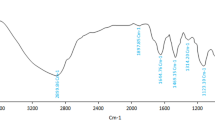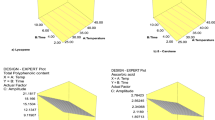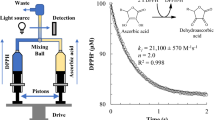Abstract
THE letter from Guha and Sen-Gupta recently published in NATURE1 prompts us to give very briefly the results of some of our own experiments. The technique we have used is based on that described for urine2. We find that in cauliflower juice (to quote one experiment) the total indophenol reducing substances amount to about 0·280 m.mol per 100 ml. Of this, free ascorbic acid accounts for some 0·007 m.mol, dehydroascorbic acid for 0·110 m.mol, and combined ascorbic acid (liberated by acid hydrolysis) for 0·150 mol. The non-ascorbic acid reducing substances are almost entirely in the combined form (liberated by acid hydrolysis) and amount to only 0·012 m.mol per 100 ml. of juice. The combined ascorbic acid is non-dialysable and is incompletely precipitated when the proteins are removed by metaphosphoric acid.
This is a preview of subscription content, access via your institution
Access options
Subscribe to this journal
Receive 51 print issues and online access
$199.00 per year
only $3.90 per issue
Buy this article
- Purchase on SpringerLink
- Instant access to full article PDF
Prices may be subject to local taxes which are calculated during checkout
Similar content being viewed by others
References
Guha and Sen-Gupta, NATURE, 141, 974 (1938).
Scarborough and Stewart, Biochem. J., 31, 2232 (1937).
Author information
Authors and Affiliations
Rights and permissions
About this article
Cite this article
SCARBOROUGH, H., STEWART, C. Combined Ascorbic Acid in Plant Tissues. Nature 142, 40 (1938). https://doi.org/10.1038/142040b0
Issue date:
DOI: https://doi.org/10.1038/142040b0
This article is cited by
-
The rôle of ascorbic acid in plant nutrition
The Botanical Review (1943)



